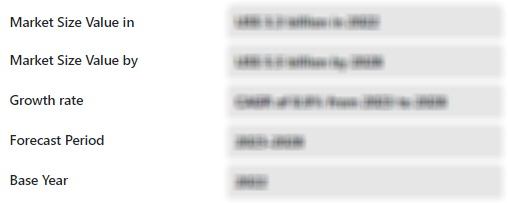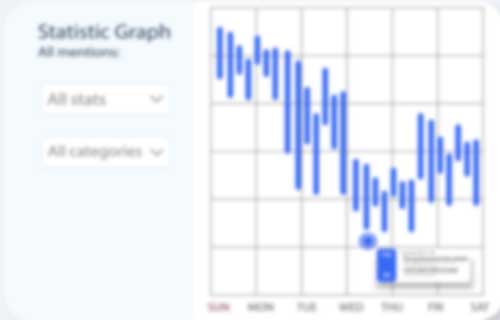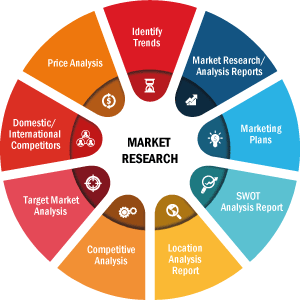The Global Micro Fulfilment market size was valued at US$ 6.60 billion in 2024 and is expected to reach US$ 59.47 billion by 2031. The Micro Fulfilment market is estimated to record a CAGR of 36.9% from 2025 to 2031. The integration of AI and Robotics-Powered Automation are likely to remain a key trend in the market.
Micro Fulfilment Market Analysis
The Micro-Fulfilment Market is gaining strong momentum as businesses seek faster, more efficient solutions to meet rising e-commerce demand and consumer expectations for same-day or next-hour delivery. One of the primary drivers is the dramatic shift in customer behavior toward online shopping—particularly in grocery, healthcare, and retail sectors—which has made last-mile delivery a critical competitive advantage. To reduce delivery times and logistics costs, retailers and brands are investing in micro-fulfilment centers (MFCs) located closer to urban populations. These compact, automated warehouses enable rapid order processing within city limits, significantly improving operational efficiency and customer satisfaction. In addition, retailers are focusing on omnichannel fulfilment strategies, and MFCs support this by allowing stores to serve both online and in-store customers from a single location. The scalability and modular nature of micro-fulfilment systems make them attractive for companies looking to optimize supply chains while minimizing capital expenditure.
Micro Fulfilment Market Overview
Micro-fulfilment refers to a logistics strategy that places small, highly automated distribution centers—known as micro-fulfilment centers (MFCs)—close to end consumers, typically in urban or suburban areas. These compact facilities are designed to accelerate last-mile delivery by fulfilling online orders quickly and efficiently, often within a few hours or less. Unlike traditional warehouses located on the outskirts of cities, MFCs are typically embedded in or near retail stores, shopping centers, or dense population hubs. This proximity significantly reduces delivery times and transportation costs, which are critical factors in today’s e-commerce-driven economy. Micro-fulfilment is particularly popular in sectors like grocery, healthcare, and convenience retail, where speed, accuracy, and freshness are crucial. By combining robotics, AI, and automation, businesses can scale quickly, adapt to demand surges, and overcome labor shortages.
Strategic Insights
Micro Fulfilment Market Drivers and Opportunities
Growth in E-Commerce and Online Grocery to Favor Market
The rapid growth of e-commerce, particularly in categories like groceries, pharmaceuticals, and fast-moving consumer goods (FMCG), is a major force accelerating the adoption of micro-fulfilment solutions. Consumers now expect near-instant delivery, flexible pickup options, and real-time inventory visibility—expectations that traditional distribution models struggle to meet efficiently. Micro-fulfilment centers (MFCs) are strategically located in urban and suburban areas, often within or adjacent to existing retail stores. This proximity to the end consumer enables same-day or even next-hour delivery, a critical advantage in the highly competitive online grocery and e-commerce space. For businesses, it reduces last-mile delivery costs, minimizes stockouts, and enhances customer satisfaction. Retailers—particularly in grocery and pharmacy—face unique challenges, including perishable goods, temperature control, and high order frequency. MFCs equipped with automation and cold-chain capabilities address these demands by streamlining picking, packing, and fulfilment within a localized environment.
Rising Consumer Demand for Speed and Convenience
In today’s digital-first retail environment, consumer expectations have shifted dramatically toward speed, convenience, and flexibility. Shoppers now demand same-day or even next-hour delivery, seamless in-store pickup, and real-time order tracking—all of which are redefining the logistics landscape. Traditional, centralized fulfilment models often struggle to meet these expectations without incurring high delivery costs or risking service delays. Micro-fulfilment centers (MFCs) directly address this challenge by positioning inventory closer to the end customer, typically within urban or suburban areas. This proximity allows for rapid order processing and fulfilment, significantly reducing delivery times and enhancing the customer experience. By deploying MFCs in underutilized retail space or smaller dedicated hubs, businesses can offer faster turnaround without the operational strain associated with large-scale distribution centers. For retailers, this shift isn’t just about meeting consumer demand—it’s a strategic imperative to maintain competitiveness. Faster fulfilment increases customer satisfaction, improves retention, and strengthens brand loyalty. It also enables more efficient last-mile logistics, reducing delivery costs while increasing order accuracy and throughput.
Micro Fulfilment Market Report Segmentation Analysis
Key segments that contributed to the derivation of the Micro Fulfilment market analysis are component, type, and end user
- Based on component, the market is segmented into hardware, software, and services.
- On the basis of type, the market is segmented into standalone, Store-integrated/In-store, and dark stores.
- Based on end user, the market is segmented into E-commerce, Retailers and distributors, and Manufacturers.
Micro Fulfilment Market Share Analysis by Geography
The geographic scope of the Micro Fulfilment market report is mainly divided into five regions: North America, Europe, Asia Pacific, Middle East and Africa, South and Central America.
North America dominated the market in 2024. The micro fulfilment Market in North America is experiencing strong growth, driven by evolving consumer expectations, technological advancements, and competitive pressure within the retail and e-commerce sectors. With same-day delivery becoming a standard offering, North American retailers are rapidly turning to micro-fulfilment centers (MFCs) to bring inventory closer to end customers and reduce last-mile delivery costs—historically the most expensive and time-consuming part of the supply chain. Urbanization and the high density of metropolitan areas across the U.S. and Canada make micro-fulfilment particularly effective. Retailers are converting underutilized retail spaces or backrooms into automated fulfilment hubs, enabling rapid order fulfilment without the overhead of large distribution centers. This is especially relevant for groceries, pharmaceuticals, and convenience goods, where speed, freshness, and availability are critical. Additionally, North America faces ongoing labor shortages and rising wage pressures, prompting investment in robotics, AI, and warehouse automation—key enablers of micro-fulfilment efficiency. Government support for advanced manufacturing and digital infrastructure is further encouraging adoption. The rise of omnichannel retailing also plays a major role, as brands seek to unify online and in-store fulfilment. As digital shopping habits continue to accelerate, micro-fulfilment is becoming a strategic asset for North American retailers aiming to scale quickly, reduce costs, and stay competitive.
Micro Fulfilment Market Report Scope
Micro Fulfilment Market News and Recent Developments
The Micro Fulfilment market is evaluated by gathering qualitative and quantitative data post primary and secondary research, which includes important corporate publications, association data, and databases. A few of the developments in the Micro Fulfilment market are listed below:
- Walgreens is continuing to invest in innovative pharmacy solutions with the opening of a new micro-fulfilment center (MFC) in Brooklyn Park, Minnesota. This facility will streamline prescription processing and reduce administrative tasks, freeing up pharmacists to focus more on delivering personalized care to their patients. This new facility will support nearly 200 Walgreens stores across the Midwest, including 145 in Minnesota alone, and is expected to process approximately 13 million prescriptions each year. It will also bring more than 175 jobs to the area, as well as significant payroll tax revenue to the state and property tax revenue to the county. (Source: Walgreens, Press Release, May 2025)
- OrionStar Robotics launched CarryBot, the logistics robot designed specifically for Micro-Fulfilment Centres (MFCs). MFCs are small, automated warehouses located in urban areas or close to consumers, aimed at shortening order response times and enhancing customer satisfaction. CarryBot is engineered to meet the demands of these compact and efficient logistics environments. Its transport capabilities, adaptability and safety features mark a significant advancement in warehouse automation, providing efficiency and flexibility to the logistics and delivery industry. (Source: OrionStar Robotics, Press Release, September 2024)
Micro Fulfilment Market Report Coverage and Deliverables
The “Micro Fulfilment Market Size and Forecast (2021–2031)” report provides a detailed analysis of the market covering below areas:
- Micro Fulfilment market size and forecast at global, regional, and country levels for all the key market segments covered under the scope
- Micro Fulfilment market trends as well as market dynamics such as drivers, restraints, and key opportunities
- Detailed PEST/Porter’s Five Forces and SWOT analysis
- Micro Fulfilment market analysis covering key market trends, global and regional framework, major players, regulations, and recent market developments
- Industry landscape and competition analysis covering market concentration, heat map analysis, prominent players, and recent developments for the Micro Fulfilment market
- Detailed company profiles

Have a question?

Naveen
Naveen will walk you through a 15-minute call to present the report’s content and answer all queries if you have any.
 Speak to Analyst
Speak to Analyst
- Sample PDF showcases the content structure and the nature of the information with qualitative and quantitative analysis.
- Request discounts available for Start-Ups & Universities
- Sample PDF showcases the content structure and the nature of the information with qualitative and quantitative analysis.
- Request discounts available for Start-Ups & Universities

Report Coverage
Revenue forecast, Company Analysis, Industry landscape, Growth factors, and Trends

Segment Covered
This text is related
to segments covered.

Regional Scope
North America, Europe, Asia Pacific, Middle East & Africa, South & Central America

Country Scope
This text is related
to country scope.
Frequently Asked Questions
North America dominated the Micro Fulfilment market in 2024.
The growth in e-commerce and online grocery and rising consumer demand for speed and convenience are the major factors driving the market.
OPEX Corporation; Swisslog Holding AG; AutoStore; Exotec SAS; Takeoff Technologies Inc are among the leading players in the Micro Fulfilment market.
The integration of AI and Robotics-Powered Automation are likely to remain a key trend in the market.
The market is expected to grow at a CAGR of 36.9% over the forecast period.
The estimated value of the Micro Fulfilment market is expected to reach US$ 59.47 billion by 2031.
Yes! We provide a free sample of the report, which includes Report Scope (Table of Contents), report structure, and selected insights to help you assess the value of the full report. Please click on the "Download Sample" button or contact us to receive your copy.
Absolutely - analyst assistance is part of the package. You can connect with our analyst post-purchase to clarify report insights, methodology or discuss how the findings apply to your business needs.
Once your order is successfully placed, you will receive a confirmation email along with your invoice.
• For published reports: You'll receive access to the report within 4-6 working hours via a secured email sent to your email.
• For upcoming reports: Your order will be recorded as a pre-booking. Our team will share the estimated release date and keep you informed of any updates. As soon as the report is published, it will be delivered to your registered email.
We offer customization options to align the report with your specific objectives. Whether you need deeper insights into a particular region, industry segment, competitor analysis, or data cut, our research team can tailor the report accordingly. Please share your requirements with us, and we'll be happy to provide a customized proposal or scope.
The report is available in either PDF format or as an Excel dataset, depending on the license you choose.
The PDF version provides the full analysis and visuals in a ready-to-read format. The Excel dataset includes all underlying data tables for easy manipulation and further analysis.
Please review the license options at checkout or contact us to confirm which formats are included with your purchase.
Our payment process is fully secure and PCI-DSS compliant.
We use trusted and encrypted payment gateways to ensure that all transactions are protected with industry-standard SSL encryption. Your payment details are never stored on our servers and are handled securely by certified third-party processors.
You can make your purchase with confidence, knowing your personal and financial information is safe with us.
Yes, we do offer special pricing for bulk purchases.
If you're interested in purchasing multiple reports, we're happy to provide a customized bundle offer or volume-based discount tailored to your needs. Please contact our sales team with the list of reports you're considering, and we'll share a personalized quote.
Yes, absolutely.
Our team is available to help you make an informed decision. Whether you have questions about the report's scope, methodology, customization options, or which license suits you best, we're here to assist. Please reach out to us at sales@theinsightpartners.com, and one of our representatives will get in touch promptly.
Yes, a billing invoice will be automatically generated and sent to your registered email upon successful completion of your purchase.
If you need the invoice in a specific format or require additional details (such as company name, GST, or VAT information), feel free to contact us, and we'll be happy to assist.
Yes, certainly.
If you encounter any difficulties accessing or receiving your report, our support team is ready to assist you. Simply reach out to us via email or live chat with your order information, and we'll ensure the issue is resolved quickly so you can access your report without interruption.
The Insight Partners performs research in 4 major stages: Data Collection & Secondary Research, Primary Research, Data Analysis and Data Triangulation & Final Review.
- Data Collection and Secondary Research:
As a market research and consulting firm operating from a decade, we have published many reports and advised several clients across the globe. First step for any study will start with an assessment of currently available data and insights from existing reports. Further, historical and current market information is collected from Investor Presentations, Annual Reports, SEC Filings, etc., and other information related to company’s performance and market positioning are gathered from Paid Databases (Factiva, Hoovers, and Reuters) and various other publications available in public domain.
Several associations trade associates, technical forums, institutes, societies and organizations are accessed to gain technical as well as market related insights through their publications such as research papers, blogs and press releases related to the studies are referred to get cues about the market. Further, white papers, journals, magazines, and other news articles published in the last 3 years are scrutinized and analyzed to understand the current market trends.
- Primary Research:
The primarily interview analysis comprise of data obtained from industry participants interview and answers to survey questions gathered by in-house primary team.
For primary research, interviews are conducted with industry experts/CEOs/Marketing Managers/Sales Managers/VPs/Subject Matter Experts from both demand and supply side to get a 360-degree view of the market. The primary team conducts several interviews based on the complexity of the markets to understand the various market trends and dynamics which makes research more credible and precise.
A typical research interview fulfils the following functions:
- Provides first-hand information on the market size, market trends, growth trends, competitive landscape, and outlook
- Validates and strengthens in-house secondary research findings
- Develops the analysis team’s expertise and market understanding
Primary research involves email interactions and telephone interviews for each market, category, segment, and sub-segment across geographies. The participants who typically take part in such a process include, but are not limited to:
- Industry participants: VPs, business development managers, market intelligence managers and national sales managers
- Outside experts: Valuation experts, research analysts and key opinion leaders specializing in the electronics and semiconductor industry.
Below is the breakup of our primary respondents by company, designation, and region:

Once we receive the confirmation from primary research sources or primary respondents, we finalize the base year market estimation and forecast the data as per the macroeconomic and microeconomic factors assessed during data collection.
- Data Analysis:
Once data is validated through both secondary as well as primary respondents, we finalize the market estimations by hypothesis formulation and factor analysis at regional and country level.
- 3.1 Macro-Economic Factor Analysis:
We analyse macroeconomic indicators such the gross domestic product (GDP), increase in the demand for goods and services across industries, technological advancement, regional economic growth, governmental policies, the influence of COVID-19, PEST analysis, and other aspects. This analysis aids in setting benchmarks for various nations/regions and approximating market splits. Additionally, the general trend of the aforementioned components aid in determining the market's development possibilities.
- 3.2 Country Level Data:
Various factors that are especially aligned to the country are taken into account to determine the market size for a certain area and country, including the presence of vendors, such as headquarters and offices, the country's GDP, demand patterns, and industry growth. To comprehend the market dynamics for the nation, a number of growth variables, inhibitors, application areas, and current market trends are researched. The aforementioned elements aid in determining the country's overall market's growth potential.
- 3.3 Company Profile:
The “Table of Contents” is formulated by listing and analyzing more than 25 - 30 companies operating in the market ecosystem across geographies. However, we profile only 10 companies as a standard practice in our syndicate reports. These 10 companies comprise leading, emerging, and regional players. Nonetheless, our analysis is not restricted to the 10 listed companies, we also analyze other companies present in the market to develop a holistic view and understand the prevailing trends. The “Company Profiles” section in the report covers key facts, business description, products & services, financial information, SWOT analysis, and key developments. The financial information presented is extracted from the annual reports and official documents of the publicly listed companies. Upon collecting the information for the sections of respective companies, we verify them via various primary sources and then compile the data in respective company profiles. The company level information helps us in deriving the base number as well as in forecasting the market size.
- 3.4 Developing Base Number:
Aggregation of sales statistics (2020-2022) and macro-economic factor, and other secondary and primary research insights are utilized to arrive at base number and related market shares for 2022. The data gaps are identified in this step and relevant market data is analyzed, collected from paid primary interviews or databases. On finalizing the base year market size, forecasts are developed on the basis of macro-economic, industry and market growth factors and company level analysis.
- Data Triangulation and Final Review:
The market findings and base year market size calculations are validated from supply as well as demand side. Demand side validations are based on macro-economic factor analysis and benchmarks for respective regions and countries. In case of supply side validations, revenues of major companies are estimated (in case not available) based on industry benchmark, approximate number of employees, product portfolio, and primary interviews revenues are gathered. Further revenue from target product/service segment is assessed to avoid overshooting of market statistics. In case of heavy deviations between supply and demand side values, all thes steps are repeated to achieve synchronization.
We follow an iterative model, wherein we share our research findings with Subject Matter Experts (SME’s) and Key Opinion Leaders (KOLs) until consensus view of the market is not formulated – this model negates any drastic deviation in the opinions of experts. Only validated and universally acceptable research findings are quoted in our reports.
We have important check points that we use to validate our research findings – which we call – data triangulation, where we validate the information, we generate from secondary sources with primary interviews and then we re-validate with our internal data bases and Subject matter experts. This comprehensive model enables us to deliver high quality, reliable data in shortest possible time.





 Get Free Sample For
Get Free Sample For